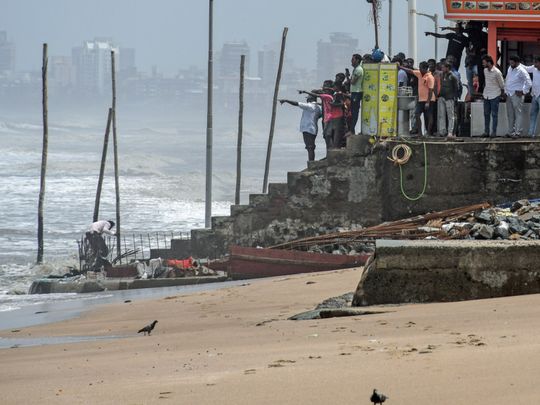
Dubai: Biporjoy has nothing to do with joy as it means disaster or calamity. The Bangla name was given by Bangladesh as per World Meteorological Organisation decree.
How are cyclones named?
The World Meteorological Organisation/United Nations Economic and Social Commission for Asia and the Pacific Panel on Tropical Cyclones is responsible for naming cyclones. The practice started to ensure quick identification of warning messages because names are presumed to be far easier to remember than numbers or any other technical terms.
Initially, the tropical storms were named arbitrarily, however, the meteorologists later decided to identify these cyclones using names from a list arranged alphabetically. Notably, six such lists are used on a rotational basis, which means, the 2015 list will be used again in 2021.
For the Atlantic and in the Southern Hemisphere (Indian Ocean and South Pacific), a panel of 13 countries — India, Bangladesh, Myanmar, Pakistan, the Maldives, Oman, Sri Lanka, Thailand, Iran, Qatar, Saudi Arabia, United Arab Emirates and Yemen — name the cyclones in the region. The cyclone names are given by counties on a rotation basis.
Why are tropical cyclones rising over Arabian Sea?
Meteorologists in a study ‘Changing status of tropical cyclones over the north Indian Ocean’ have observed that in recent times, due to climate change, cyclonic storms in the Bay of Bengal and the Arabian Sea have been intensifying rapidly and retaining their intensity for a longer duration.
The scientists noted that the frequency, duration, and intensity of cyclones in the Arabian Sea have increased by 40 per cent in the pre-monsoon period and about 20 per cent in the post-monsoon period. Experts also concluded that the number of cyclones in the Arabian Sea has increased by 52 per cent, while very severe cyclones have increased by 150 per cent.
Experts say climate change is leading to an increase in cyclones in the Arabian Sea region, making preparations for natural disasters all the more urgent.
“The oceans have become warmer already on account of climate change,” said Raghu Murtugudde, Earth system scientist at the University of Maryland. He said a recent study shows that the Arabian Sea has warmed up by almost 1.2 degrees Celsius (2.2 degrees Fahrenheit) since March this year, making conditions favorable for severe cyclones.
A 2021 study found that the frequency, duration and intensity of cyclones in the Arabian Sea had increased significantly between 1982 and 2019, he said.
UN climate reports have also stated that the intensity of tropical cyclones would increase in a warmer climate. A report by the Intergovernmental Panel on Climate Change in 2019 found that since the 1950s, the fastest sea surface warming has occurred in the Indian Ocean.











